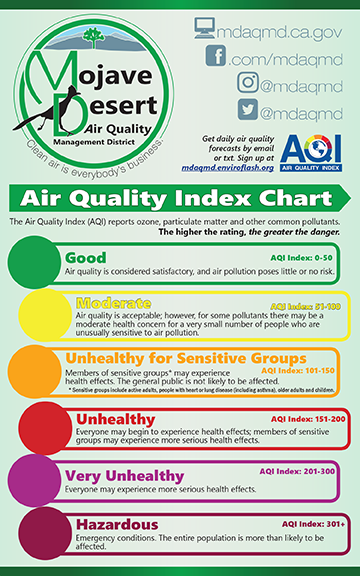Why AQI? This is a question we hear on occasion, although maybe not always worded this way.

Sometimes it’s, “Why should I care about AQI?” Often, the people asking that question have a more basic question: “What is AQI?”
AQI, the abbreviation for Air Quality Index, a system for putting a number to a level of air pollution.
As AirNow.gov puts it, think of the AQI as a yardstick that runs from 0 to 500. The higher the AQI value, the greater the level of air pollution. Greater air pollution means the health concern is greater. An AQI value of 50 or below represents good air quality. In contrast, a value over 300 represents hazardous air quality.
For each pollutant an AQI value of 100 generally corresponds to an ambient air concentration. The concentration equals the level of the short-term national ambient air quality standard. That standard exists to protect public health.
We generally consider AQI values at or below 100 satisfactory. When AQI values are above 100, air quality is unhealthy: at first for certain sensitive groups of people, then for everyone as AQI values get higher.
The AQI is divided into six categories. Each category represents a different level of health concern. Each category also has a specific color. The colors easily show whether air quality is reaching unhealthy levels in their communities.
Communicating current air quality to the people who live, work and play in the Mojave Desert is essential to our mission.
Checking the AQI before you head outside is essential in planning any kind of activity outdoors. Additionally, understanding the AQI is crucial in times of poor or hazardous air quality, such as wildfire smoke.
The OurDesertAir homepage includes a link, What’s My AQI?, to check your current and forecast AQI. Click on it anytime or visit www.AirNow.gov.
Most of the information in this blog was provided by the U.S. Environmental Protection Agency and AirNow. Learn more about air quality and the AQI at www.AirNow.gov.
